Performing live with a MIDI controller offers unmatched real-time remixing and improvisational possibilities beyond just a straight DJ set or pre-recorded live PA.
If you map functions intelligently, rehearse transitions thoroughly, and optimize technical aspects, MIDI controllers enable producers/artists to craft captivating, interactive club and concert experiences showcasing their productions.
Let’s dive into key steps for using a MIDI controller to take command of dance floors with compelling live performances.
How Can I Use a MIDI Controller for Live Shows?
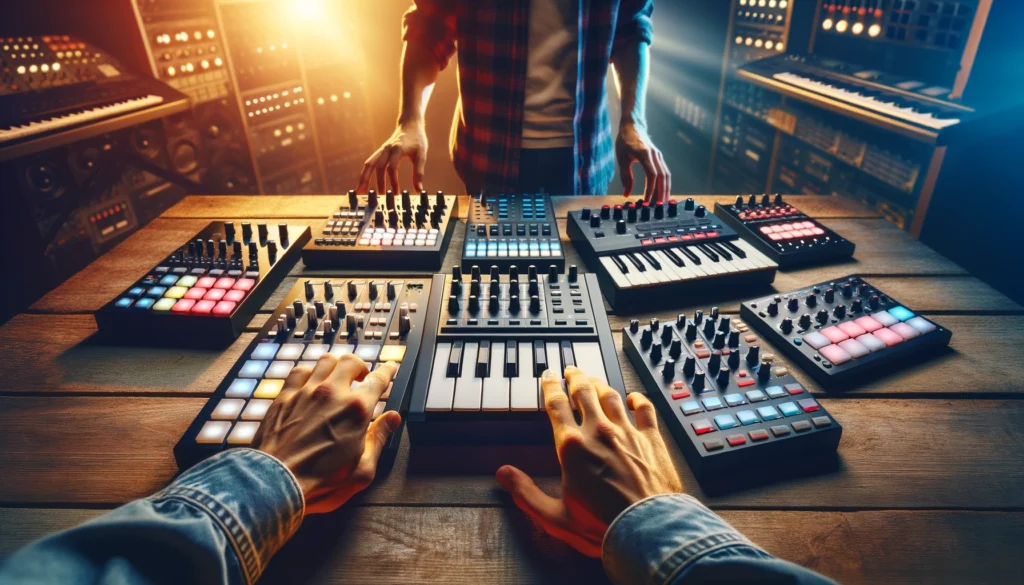
In short, MIDI controllers allow real-time musical creativity in a live setting by converting physical gestures and actions into manipulations of sounds, lighting, visuals and more during stage performances.
We’ll explore specifics below, but by combining tactile controls with extensive planning and practice, the possibilities for dynamic audience experiences are endless.
1. Choose the Right MIDI Controller
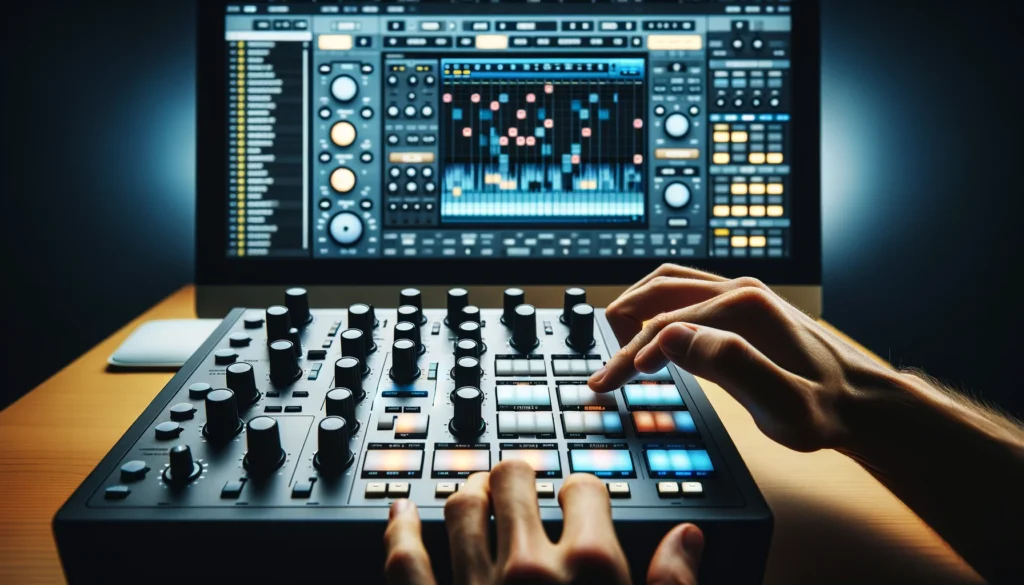
When preparing to use a MIDI controller for live performance, the first step is to choose the right device for your needs.
There are a few main factors to consider when selecting a controller: size and portability if you plan to travel with it; the number of controls, pads, and keys that suit the functions you want to trigger during your performance; and any specialized features like motorized faders, velocity-sensitive pads, or touch strips that could be useful.
Keyboard-style MIDI controllers allow you to play software instruments and trigger loops and clips.
Pad controllers are ideal for launching one-shot samples and finger drumming.
Modular and specialized controllers give you faders, knobs, and buttons to control effects, transitions, and more parameters.
Take time to research different MIDI controller options to find the best fit for the type of live performance you want to create.
If possible, get hands-on time testing controllers at music equipment stores before you buy.
This will confirm that the hardware feels intuitive to play and that there are enough (but not more than necessary) physical controls to cover what you want to manipulate.
Consider size – a smaller controller may be more portable but limit functions, while larger units enable more control at the expense of portability.
Find your ideal balance of functionality for your live performance goals versus mobility if needed.
2. Map Functions and Sounds
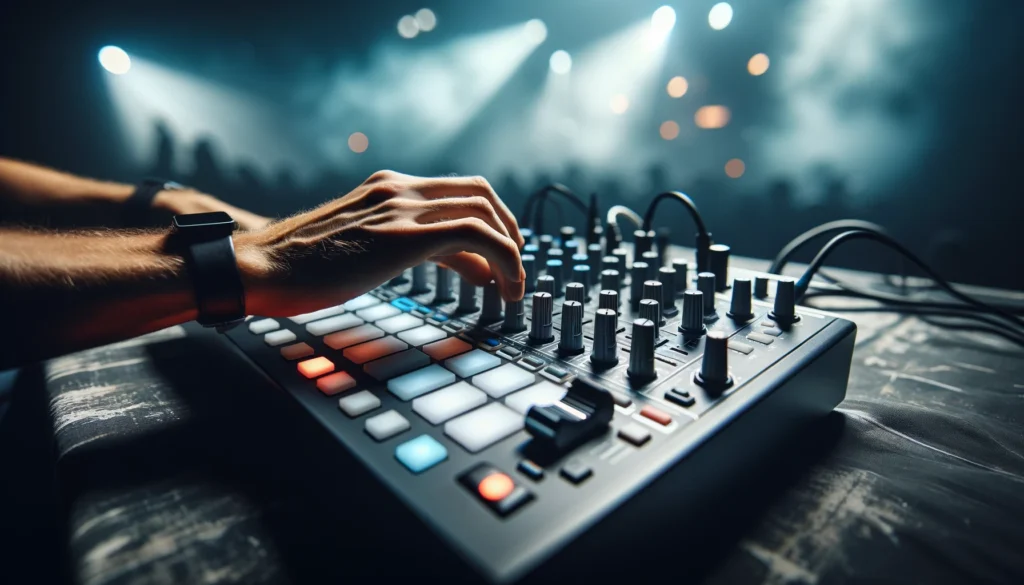
After acquiring a MIDI controller tailored for your live performance style, the next key step is mapping which functions each button, pad, fader or other control will trigger.
This mapping happens inside your digital audio workstation (DAW) or performance software.
For example, you can assign the first bank of 8 drum pads to launch one-shot vocal samples, the next bank to trigger blocks of atmospheric textures, and additional banks for percussion or synth loops that you want to drop in and out.
Faders can crossfade between different instruments or effects.
You can have one section of the controller focused on keyboards and playing software instrument parts, while another section triggers clips or changes synth patches.
Get creative and think about what aspects of your live set you most want your hands to control versus pre-recorded sequences that will play automatically.
Come up with different control layers so that one section of pads might trigger drums in the first layer, then switch a control to have those same pads launch vocal or bass sounds in another layer.
Advancing your MIDI control from just simple note triggering to manipulation of lights, video clips, or deeper parameter tweaking is also an option.
Be sure to leave some room for improvisation and real-time remixing so your show always has moments of spontaneity.
3. Work on Transitions
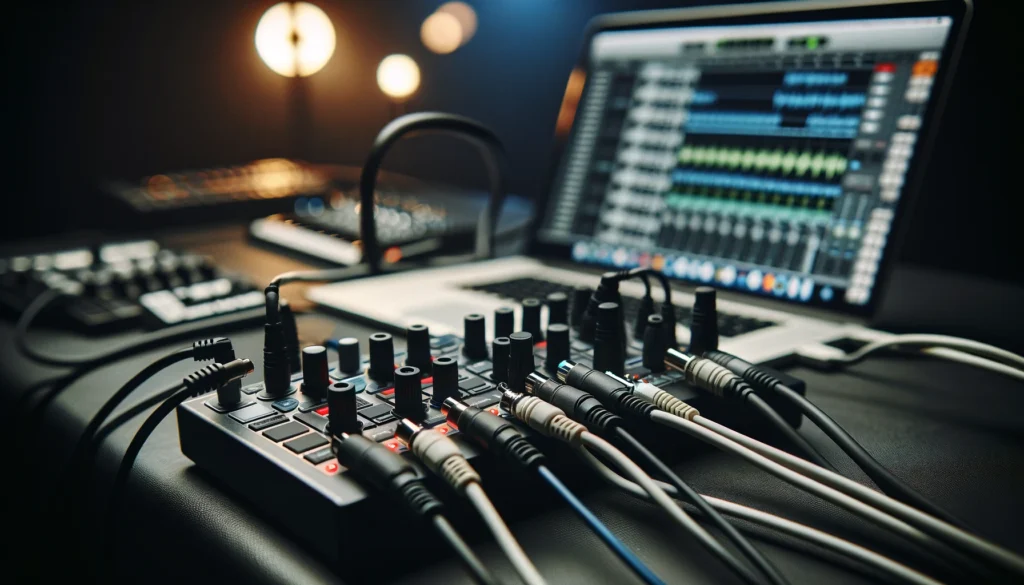
When building a MIDI controller-based live performance setup, how the music transitions from section to section is crucially important.
You want coherent transitions that “set the table” for upcoming sections so the performance flows smoothly.
This transition work starts with getting the timing right for things you’ve sequenced ahead of time like tempo changes, builds and drops, or new loops getting introduced.
Sequence trigger points so they align perfectly with when you launch something new from the controller.
Practice playing through transitions similar to how a DJ mixes between tracks.
Work on layering/crossfading between different drum patterns and harmonic parts so the changes feel natural.
Get used to finger drumming through percussive sections, playing keyboards for both transitions and melodic hooks, or tweaking effects like filters, delays and reverbs at the right times.
Having controls for even subtle things like track panning or tonal modulation mapped can make transitions more ear-catching.
The goal is keeping your hands engaged on the controller as much as possible – leaving the audience dancing without disruptive gaps or jarring changes.
4. Deal with Technical Requirements

While a MIDI controller setup might seem simple on the surface, dealing with finicky technical requirements is pivotal to succeed playing live.
The physical connectivity running from the MIDI controller itself to your computer and audio interface needs to be solid and reliable.
This is why it is smart to use high-quality MIDI and USB cables rather than cheap generics that could quit working in the middle of a big performance.
Consider clipping your controller to a laptop stand so it does not get unplugged accidentally.
Create a technical checklist covering elements like WiFi connectivity, battery charges on all devices, and software/firmware updates.
Despite best efforts, be ready for the possibility of something going wrong tech-wise by having backup plans in place.
For mission-critical controllers, it can be worth investing in an identical second unit that you could swap in if the main controller fails.
Bring spare power supplies, cables, and adapters if relying on any non-standard connections.
If your live set includes critical backing tracks or sequences beyond what you can play manually, have those same tracks available to stream from a phone as a last resort.
Thinking through contingency plans will ensure the show goes on if you run into last-minute tech troubles.
5. Rehearse, Rehearse, Rehearse
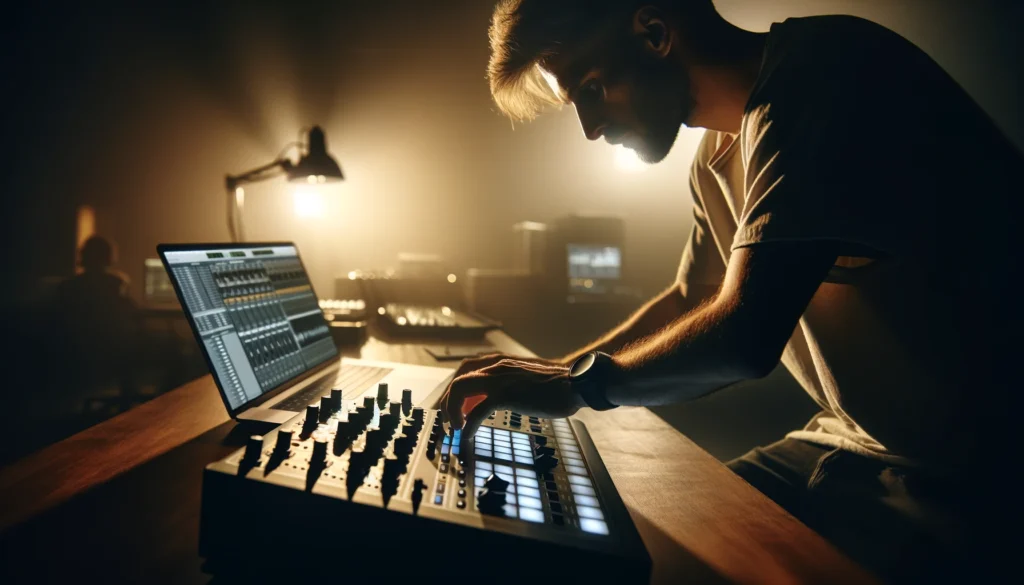
Getting the MIDI mapping, sounds, sequences and gear configured is still just the beginning – next comes diligent rehearsals so operating everything required for your real-time live performance becomes second nature.
Run through full set lengths on your own or for friends to identify what parts of the show flow well versus areas needing refinement.
Since looking back and forth from controllers to a laptop screen can break the creative flow, dedicated monitor screens or tablets can display software interfaces in your line of sight.
Mark controller buttons with colored tape to quickly orient hands to the right controls without glancing away from the audience.
Record run-throughs on video so you can review skills that still need work like getting more intricate with finger drumming fills or nailing every keyboard transition.
Pay attention to how the overall energy shifts during longer rehearsals so you can rearrange sections if the pace starts dragging.
Having great sounds and sequences is meaningless without matching stage presence, so use rehearsals to get comfortable making eye contact, working the whole stage, and exuding confidence no matter if rehearsing solo in your basement or on the actual concert stage.
6. Optimize Your Stage Setup
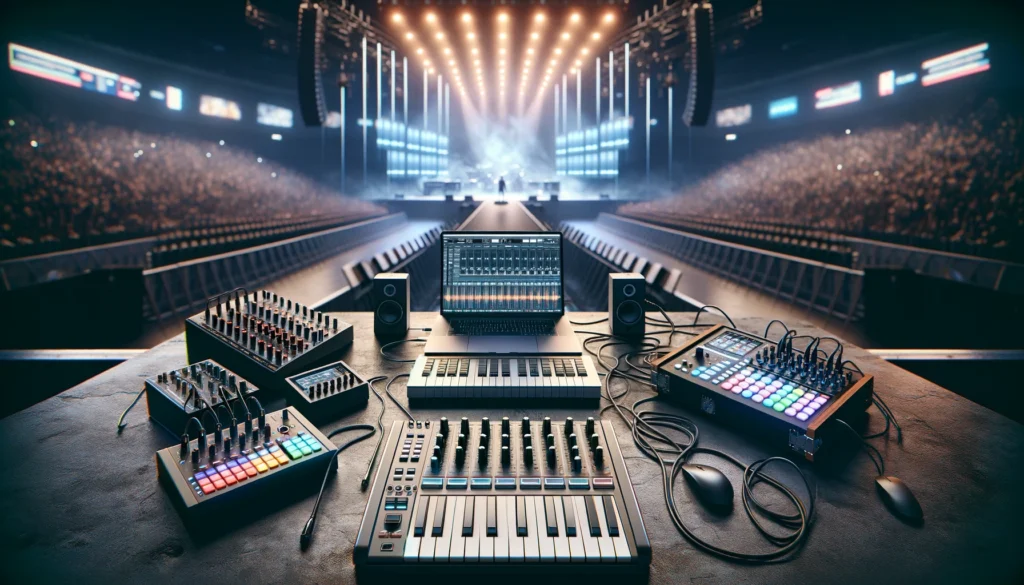
After extensive rehearsals, the final step is moving the show to real venues and locking in an optimized stage setup.
Carefully position your MIDI controllers, laptop stand, audio interface, and any other gear needed so everything is within arm’s reach.
Ensure you have strong sight lines in front of you to clearly see audience reactions and any onstage visuals like LED walls.
Test that monitor speaker placement provides the volume and mixes needed without overwhelming the overall sound.
For festivals or unfamiliar stages, scope things out in advance to identify possible pitfalls like short cable runs, power supply issues, lighting interference or problematic WiFi.
Since even great performers have off-nights struggling with tech gremlins, do not hesitate to enlist an audio engineer, lighting tech or backup musician side-stage to assist getting over humps.
Troubleshoot problems during soundcheck when possible instead of once a high-stakes performance starts.
Communicate ahead of time on critical steps like having someone start playback on certain tracks or monitor software lockups you cannot see yourself.
Putting in preparation for unpredictable scenarios makes it easier to then lose yourself in the creative flow once the performance goes live.
With the right MIDI controller choice, thoughtful mapping/programming, extensive rehearsals and a resilient show setup, you now have everything needed to share dynamic, controller-based music with enthralled crowds.
Conclusion
In summary, selecting the ideal MIDI controller customized for your live performance goals, diligently mapping functions and sounds, rehearsing meticulous transitions, overpreparing on the technical side, and continually refining your overall show flow through extensive rehearsals allows DJs, producers and electronic musicians to share their creative visions with the world through compelling controller-based performances.
With the tips covered throughout this guide, you now have a roadmap to take the first steps, avoid common pitfalls, and maximize the dynamic interplay possible when human artistry meets tactile digital instruments onstage.
